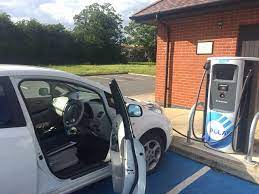The UK government is adapting to the change to EV by committing to ending the sale of new petrol and diesel cars and vans by 2030. By 2035 all new cars and vans will be required to have zero emissions at the exhaust pipe.
This calls for a comprehensive Public EV chargepoint network. For this venture the UK government has set a vision and a motto for EV charging infrastructure that ‘works for everyone, wherever they live, work and travel’.
This is a big undertaking as UK’s charging network has to expand rapidly to around 300,000 chargepoints from the existing infrastructure around 35,000 chargepoints.
To adhere to the motto and vision to building a chargepoint network that can work for everyone, chargepoints must be rolled out where they are needed for today and tomorrow.
This can be achieved anticipating chargepoints in the right places ahead of demand which will inspire confidence in drivers who have not made the switch, thereby accelerating the uptake of EVs, which in turn will stimulate economic growth and reinforce decarbonisation.
Advances in spatial modelling and analytics offer immense opportunity to direct the efficient delivery of chargepoints. For example, we can now combine multiple datasets to understand chargepoint demand for a given area, pinpoint the most cost-effective locations and select which of these will best meet the needs of the community.
Modelling demand for chargepoints requires technical know-how and access to datasets about consumer preferences, shifting populations and the physical environment. The onus here falls on the local authority’s successful chargepoint rollout, particularly for the deployment of widespread on-street charging.
Here we identify four challenges to effective chargepoint rollout that location data can help overcome
- Modelling future demand: Demand modelling can provide planners with data-driven evidence to identify how many and what types of chargepoints need to go where and by when, taking into consideration local needs
- Finding suitable sites: Improved access to more granular data about energy capacity and physical constraints can support planners to identify the optimal locations and avoid wasted effort.
- Creating a seamless consumer experience: Making chargepoint location data more Findable, Accessible, Interoperable and Reusable (FAIR) will allow the private sector to create a better charging experience for EV drivers, while enabling more innovative products and services to develop.
- Tracking Rollout: The government should ensure it can monitor rollout of chargepoints nationally and regionally by developing spatial metrics that can take account of local needs.
Thus, Location data can help deliver the public charging network needed to give drivers the confidence to switch to an EV, safe in the knowledge that they will be able to charge wherever they live and work and travel.









